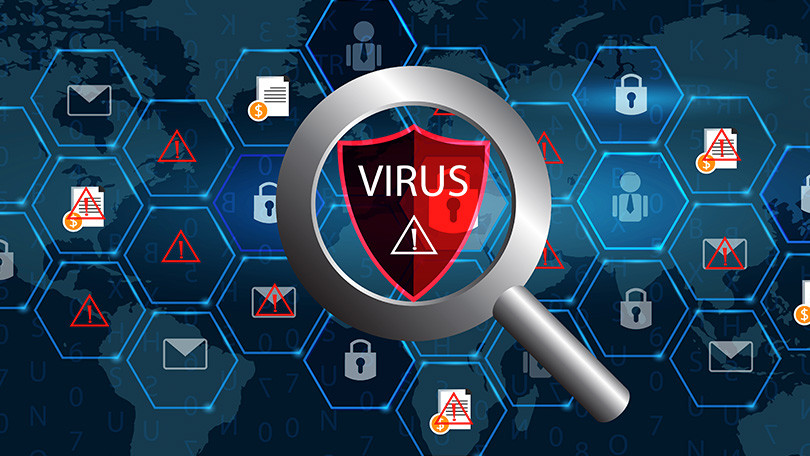The Evolution of Programming Viruses and the Role of Antivirus Solutions
 Ahmed Raza
Ahmed Raza
The dynamic realm of technology has led to unprecedented advancements in software development, yet it has also given rise to malicious software, or viruses, designed to disrupt, damage, or exploit computer systems. Understanding how viruses are programmed and how antivirus solutions work to combat them is essential for maintaining cybersecurity.
What is a Computer Virus?
A computer virus is a self-replicating program that spreads by inserting its code into other executable files or documents. Once activated, it can corrupt data, slow down systems, steal information, or perform other malicious activities. The key characteristic of a virus is its ability to propagate from one system to another, often without the user’s knowledge.
How Viruses Are Programmed
Creating a virus requires advanced programming skills and knowledge of operating systems, networks, and system vulnerabilities. While unethical and illegal, understanding the technical aspects of virus creation helps cybersecurity professionals develop effective countermeasures.
Types of Programming Viruses
File Infector Viruses
These viruses attach themselves to executable files. When the infected program runs, the virus is activated.
Example: Cascade Virus – This DOS virus displayed falling characters while corrupting files.Boot Sector Viruses
These viruses target the boot sector of a storage device, which is accessed when the computer starts.
Example: Michelangelo Virus – Designed to overwrite hard drive data on a specific date.Macro Viruses
Written in scripting languages like VBA (Visual Basic for Applications), these target software like Microsoft Word and Excel.
Example: Melissa Virus – Spread through email attachments and infected Word documents.Polymorphic Viruses
These can change their code structure to avoid detection by traditional antivirus software.
Example: Storm Worm – A sophisticated virus used in large-scale botnet attacks.Ransomware
Though not strictly a virus, ransomware encrypts a user’s data and demands payment for decryption.
Example: WannaCry – Targeted outdated Windows systems and disrupted businesses globally.
Key Techniques in Virus Programming
Stealth Techniques: Hide virus activity from users and detection software.
Replication Algorithms: Ensure the virus can copy itself efficiently.
Payload Development: Define what the virus will do upon activation (e.g., delete files, steal data).
The Role of Antivirus Software
Antivirus solutions are the frontline defense against viruses. They detect, quarantine, and eliminate malicious programs by leveraging a combination of techniques.
How Antivirus Software Works
Signature-Based Detection
Scans for known patterns of virus code (signatures).
Relies on regular updates to the virus database.
Heuristic Analysis
Detects previously unknown viruses by analyzing code behavior and patterns.
Identifies suspicious activities like unauthorized file modifications.
Sandboxing
Runs suspicious programs in a controlled environment to observe behavior.
Ensures malicious actions do not affect the actual system.
Behavioral Analysis
Monitors program activities in real-time to detect deviations from normal behavior.
Effective against zero-day threats.
AI and Machine Learning
Modern antivirus solutions use AI to predict and identify threats dynamically.
Improves detection of polymorphic and evolving viruses.
Popular Antivirus Software
Norton Antivirus: Comprehensive malware protection and user-friendly interface.
McAfee Total Protection: Provides device security and identity theft protection.
Kaspersky Antivirus: Known for robust malware detection and system optimization.
Bitdefender: Offers advanced threat defense with minimal impact on system performance.
The Battle Between Viruses and Antivirus Solutions
The cybersecurity landscape is an ongoing arms race. As antivirus technologies become more sophisticated, malware developers adapt, creating more advanced and elusive viruses. This constant evolution underscores the importance of proactive cybersecurity measures, including regular software updates, strong passwords, and awareness training.
Examples of Historical Battles
Code Red Virus vs. IIS Security Updates: The worm exploited a vulnerability in Microsoft IIS, prompting swift patching by Microsoft.
ILOVEYOU Virus vs. Email Scanning Tools: This widespread virus led to improvements in email security protocols.
Conclusion
Programming viruses remain a significant threat to digital security, evolving in complexity and sophistication. However, the development of robust antivirus solutions continues to mitigate these threats effectively. While the creation and distribution of viruses are unequivocally unethical and illegal, studying them from a technical perspective equips cybersecurity professionals to safeguard the digital world.
For individuals and organizations alike, the key takeaway is vigilance: keep systems updated, invest in reliable antivirus solutions, and prioritize cybersecurity awareness.
Subscribe to my newsletter
Read articles from Ahmed Raza directly inside your inbox. Subscribe to the newsletter, and don't miss out.
Written by

Ahmed Raza
Ahmed Raza
Ahmed Raza is a versatile full-stack developer with extensive experience in building APIs through both REST and GraphQL. Skilled in Golang, he uses gqlgen to create optimized GraphQL APIs, alongside Redis for effective caching and data management. Ahmed is proficient in a wide range of technologies, including YAML, SQL, and MongoDB for data handling, as well as JavaScript, HTML, and CSS for front-end development. His technical toolkit also includes Node.js, React, Java, C, and C++, enabling him to develop comprehensive, scalable applications. Ahmed's well-rounded expertise allows him to craft high-performance solutions that address diverse and complex application needs.